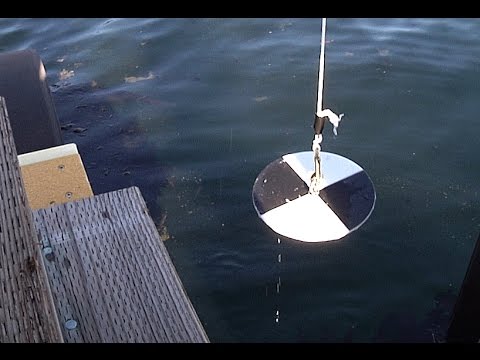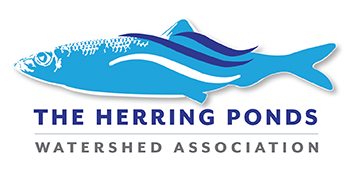 Pure water, like glass, is highly transparent. In pond water, plankton, for example algae, may be suspended and reduce transparency. The more algae, the less transparency. Algae thrive and multiply only when the water is rich in nutrients. For this reason, transparency is a good indicator of the amount of polluting nutrients and the overall health of a pond.
Pure water, like glass, is highly transparent. In pond water, plankton, for example algae, may be suspended and reduce transparency. The more algae, the less transparency. Algae thrive and multiply only when the water is rich in nutrients. For this reason, transparency is a good indicator of the amount of polluting nutrients and the overall health of a pond.
However, plankton, both phytoplankton and zooplankton, tend to die and disappear when water is close to freezing. Warmer water supports plankton growth, leading to a loss of water transparency. Therefore transparency measurements are complicated by these strong seasonal variations added to nutrient variations.
 A Secchi disk is a very simple gadget used to estimate the transparency of pond water. It is a disk of 8” diameter, with its quadrants painted alternately in white and black. A string is attached to its center. It is lowered into a pond until it disappears from sight. Then it is raised again. The depths at which it disappears and reappears are averaged and called the Secchi depth.Measurements typically are somewhere between 1 and 12 meters (3.3 – 39.4 feet).
A Secchi disk is a very simple gadget used to estimate the transparency of pond water. It is a disk of 8” diameter, with its quadrants painted alternately in white and black. A string is attached to its center. It is lowered into a pond until it disappears from sight. Then it is raised again. The depths at which it disappears and reappears are averaged and called the Secchi depth.Measurements typically are somewhere between 1 and 12 meters (3.3 – 39.4 feet).
 Secchi depth data can be interpreted as follows:
Secchi depth data can be interpreted as follows:
- Low amount of nutrients, oligotrophic pond – Secchi depth greater than 5 meters (16.5 feet)
- Moderate amount of nutrients, mesotrophic pond – 2.5 to 5 meters (8.2 – 16.5 ft.)
- High amount of nutrients, eutrophic pond – Less than 2.5 meters (8.2 feet)
We started Secchi depth measurements in 2010, and they are now collected routinely. As our data indicate, there are huge variations in the results, pond water being very clear in winter and early spring, and then rapidly losing transparency in summer and fall. These data agree with the direct nutrient measurements.
